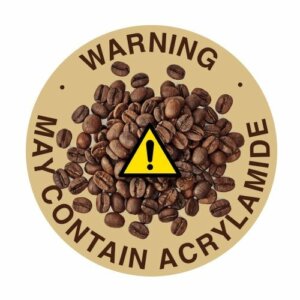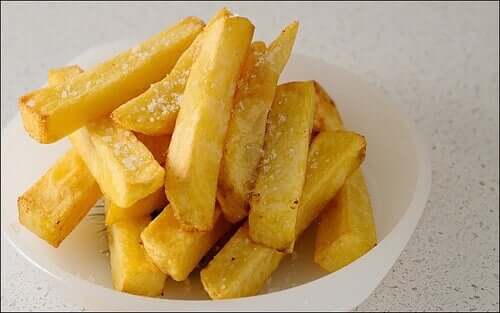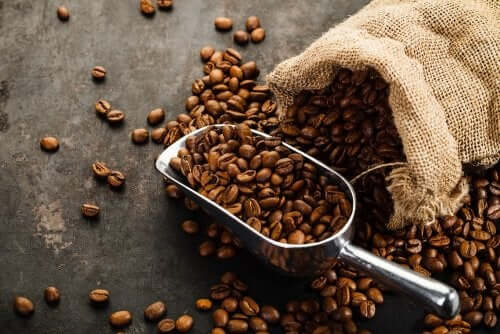Acrylamide in Food: Risks, and How to Avoid It


Written and verified by the nutritionist Saúl Sánchez Arias
Acrylamide is a cancer-causing substance that forms in starch-containing products that undergo high-temperature cooking processes, above 248 degrees Fahrenheit. Acrylamide in foods forms from sugars and amino acids through a process called the Maillard reaction.
What are the risks?
Acrylamide spreads to all the body’s organs. Oral exposure increases the chance of developing genetic mutations and tumors. Furthermore, it can have negative effects on the nervous system, and can be harmful for fetal development in pregnant women.
There is no “acceptable amount” because any exposure to this substance could damage DNA, and therefore increase the risk of tumors occurring.
Carcinogenic substance
As we’ve mentioned, acrylamide is a cancer-causing substance, as shown in a study published in the International Journal of Cancer. Despite this, it can’t be prohibited, because it’s impossible to remove starches from foodstuffs.
Therefore, the key is to maintain a varied diet that includes lots of fruits and vegetables. In this way, the supply of antioxidants and their anticarcinogenic and anti-inflammatory effects buffer the noxious effects of acrylamide.
In any case, consuming this substance doesn’t necessarily mean that an individual will develop cancer in the future. It is simply a toxin that increases the risk. However, cancer is a complex disease influenced by many factors.
Which foods contain the most acrylamide?

A good way to identify foods that likely contain large amounts of this substance is by observing the color. Brown color due to toasting indicates danger of potentially high concentrations of acrylamide. Toasted sandwich bread is a common example. It’s important to remove the darkest parts.
Also read: Are Potatoes Good For The Diet?
Non-food sources of acrylamide
Acrylamide is also found in tobacco. This is dangerous to smokers as well as those around them who breathe cigarette smoke.
Possible solutions
The most effective method for reducing or avoiding consumption of acrylamide is to pay attention to cooking methods. The main strategy is steering clear of fried and battered foods. Therefore, the oven, griddle, and steam are the most appropriate methods for cooking without the risk of consuming this substance.
In any case, when baking foods it’s important not to set the temperature above 356-392 degrees Fahrenheit. Additionally, it’s recommendable to flip foods in the oven every 10 minutes to keep them from toasting too much.
It’s also important to avoid consuming foods that are too toasted or burnt, because they’ve been shown to contain this substance. Another effective strategy is to leave potatoes soaking in water to remove some of the starch. It’s also a good idea to wash rice thoroughly.
When it comes to coffee, it’s best to choose a natural, lightly roasted variety. Instant coffee contains the highest levels of acrylamide. Concentration can also vary depending on the variety and origin of the coffee, as well as filtration. Acrylamide is a water-soluble molecule, therefore any filtering process considerably reduces the levels of this toxin.

You might like: 5 Best Tips to Stop Drinking Too Much Coffee
When it comes to cooking oil, to avoid the formation of acrylamide it’s best to use extra-virgin olive oil over other types of vegetable oils. This is because it withstands high temperatures and multiple uses better. In this manner, it’s less likely to form this toxin.
However, to avoid complications, we shouldn’t allow fried foods to toast or brown too much. It’s important to keep in mind that cold temperatures promote the formation of this substance. Therefore, you shouldn’t keep foods high in starch, like fried potatoes, in the refrigerator.
Be careful with acrylamide in foodstuffs
Acrylamide in foods is a carcinogen whose consumption should be avoided. To do this, it’s best to use low-temperature cooking methods, remove toasted parts of foods, and reduce consumption of battered and processed foods.
It should be noted that to buffer the effects of acrylamide, it’s necessary to include plenty of antioxidants in your diet. Antioxidants block the formation of free radicals, and reduce the risk of developing problems like cancer.
All cited sources were thoroughly reviewed by our team to ensure their quality, reliability, currency, and validity. The bibliography of this article was considered reliable and of academic or scientific accuracy.
- Elias A., Roasto M., Reinik M., Nelis K., et al., Acrylamide in commercial foods and intake by infants in Estonia. Food Addit Contam, 2017. 34 (11): 1875-1884.
- Pelucchi C., Bosetti C., Galeone C., La Vecchia C., Dietary acrylamide and cáncer risk: an updated meta-analysis. Int J Cancer, 2015. 136 (12): 2912-22.
- Mojska H., Gielecinska I., Studies of acrylamide level in coffee and coffee substitutes: influence of raw material and manufacturing conditions. Rocz Panstw Zakl Hig, 2013. 64 (3): 173-81.
This text is provided for informational purposes only and does not replace consultation with a professional. If in doubt, consult your specialist.








